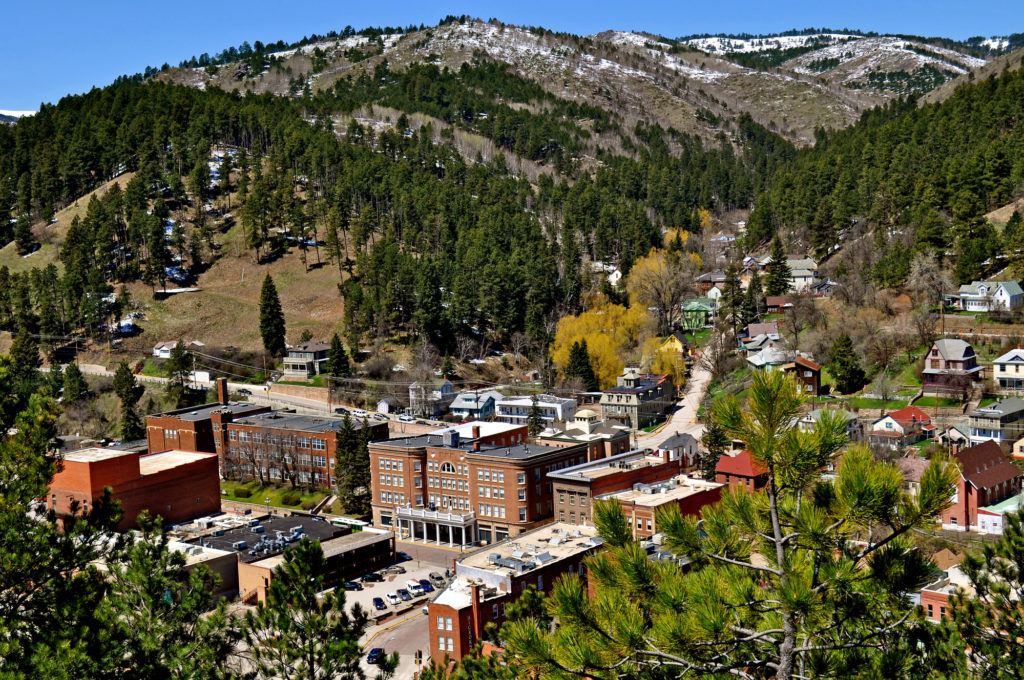by Roberta Murphy

I really want to talk about the effect gas prices will have on real estate, but first wish to tell a little story:
My grandgather, Adolph Michelson emigrated at the age of 7 with his family from Norway to Deadwood, South Dakota. It required a long, hard journey by steamship. train and wagon to arrive at their eventual home in the steep hills above Deadwood. It was there that they lived with other immigrants and Indians, sharing magnificent views and boot camp workouts as they trudged up and down that steep, steep hill to get to town for work, school, food and other supplies.
Views be damned. This was where the poor people lived.
As soon as the Michelson family could afford to do so, they moved their big family into a home in town, where shopping, school and employment were within easy walking distance. Their decision to move was not based on home features, the quality of the stove, or the number of closets–or even neighborhood amenities. It was based on that single and most basic real estate dynamic:
LOCATION
It is only since the advent of sprawling suburbias and each family having multiple automobiles that we strayed from distinct town and country living. The wealthy may have had homes in both locations, but the average family lived near employment . There were no school buses (or video games because kids had to hike through miles of rain and snow to get to school each day) and gasoline stations were pretty rare at the turn of the that other century. Which all leads me to wonder….
What might be the top priority for the home of the future when gas prices reach $6, $8, $10 or even $12 per gallon?
How about the radical choice of living walking-close to employment, shopping and schools? Or living near a bus stop or transit center where one can commute for work, school and fun?
I am eying real estate differently these days–and am coming around to my ancestor’s way of thinking. Location trumps views, walkable sidewalks trump big back yards and a bicycle pump beats a gas pump–at least for kids who drive or are driven to school (ever seen the long lines of mini vans idling outside our schools at arrival and departure times–or high school parking lots?). Might a more urban lifestyle offer some solutions that would allow for a saner lifestyle?
I am also wondering if Carol Lloyd’s prediction of suburbs turning into Slumburbia might also come true–sooner rather than later due to rising fuel costs? In her SF Gate article, she notes, “In Europe, where the cities never died, the suburbs have long been the homes of last resort for the poor and the marginalized.” This is already occurring in and around sprawling urban centers like Houston, where home prices in and close to downtown Houston are selling at a premium, while homes in once-affluent suburbs are selling at prices far below replacement costs. It is a scenario being repeated all over the country, with slightly different configurations along the coasts.
In San Diego County, where I live and work, we are anecdotally seeing a surge of buyers seeking to live within walking distance of restaurants, theaters, dry cleaners and food or farmer’s markets. They no longer want to battle freeway gridlock, and would happily trade their road warrior status for the peace of riding a train to work. They are also seeking more open communities, where neighbors stroll by and greet one another, where not so much of life is lived in and for cars–or behind mortgaged garage doors.
I am so, so tempted to join them and not worry about gas prices again….






Hi Roberta,
It is amazing how we seem to be getting back to ‘the way it was’. Should also be interesting to see New Urbanism type communities start popping up with either Apple or Microsoft designing the work facilities. Just around the corner. 🙂 Techonolgy and Real Estate combined in more ways than one.
Love the post! It really makes us think.
Steph
Stephanie,
Frankly, I hope Apple, Inc, does the design;-)
I think you are right, and that an urban renaissance is already well underway.
Hope all is well in lush, green Houston!
Great article…we will see that in Tampa. I have always lived “in town”…5 minutes from everything. All the people who moved to the burbs to save on housing are kicking themselves with the gas prices and their Suburbans!
Sorry about the hack…I just heard!
Jackie: I think most metropolitan areas in the US will see greater migration to the urban and employment centers. Driving 15 minutes to get to the nearest grocery store or gas station now weighs heavily against remote residences.
Am still growling (along with a number of other targeted bloggers) about the effects of the wesbite massacre.
The turmoil in the global financial markets has cast its shadow on India’s largest real estate deal. India’s real estate developers, especially the mid-sized ones, have been facing a liquidity crunch since last year. Developers can no longer tap the external commercial borrowing route, while domestic borrowing costs have gone up on account of tight-fisted monetary policy, which is likely to harden further in days to come. In addition, the stock market has taken a beating with real estate stocks falling off their recent highs. Other sources of funding for instance, the London Stock Exchange’s Alternate Investment Market or listing real estate investment trusts abroad are also not feasible in current market conditions.
The tender that BPTP won, beating bigger players like DLF and Omaxe, has an allowed the company to seek an extension to pay the first tranche.Failure to make the payment within the extended deadline would result in the award being scrapped and a fresh tender being announced.What impact will it have on the Indian economy in general and Indian real estate sector in particular???For more view- realtydigest.blogspot.com
Sounds like a good theory, but is it quite so cut and dried?
For example, Carol Lloyd’s “In Europe, where the cities never died, the suburbs have long been the homes of last resort for the poor and the marginalized.”is something of a sweeping generalization: I can only speak of the UK , rather that all of Europe, but I don’t believe that the suburban inhabitants of, say, Surrey or Berkshire fit the poor etc. description! Similarly, there are some very undesirable parts of e.g. the city of London to go alongside Belgravia, Mayfair and so on. Life is often a little more complicated than some commentators make out.
As far as the effect of gas is concerned, wouldn’t things even out i.e. if there’s a move to the city, a reduced demands for the suburbs would lower prices there and compensate for gas prices?
Roberta……My name is Jack Michelson Harmon…..Adolph was my mom’s dads brother…My mothers dad was Earl. I am just now reading the book Adolph wrote and never published…Have you heard about it..? It is the history of the Michelson family from about the time Adolph was 6. We must be cousins….Don’t know if I know you or not…My mother is Helen Harmon…or was Helen Michelson. Send me an email at svslick@hotmail.com…or call 435-649-6511
Jack:
What a treat! We are absolutely related and yes, I have read Adolph Michelson’s book–several times. My dad recalls your grandfather Earl.
It is a small world. I’ll be on the phone to you shortly!